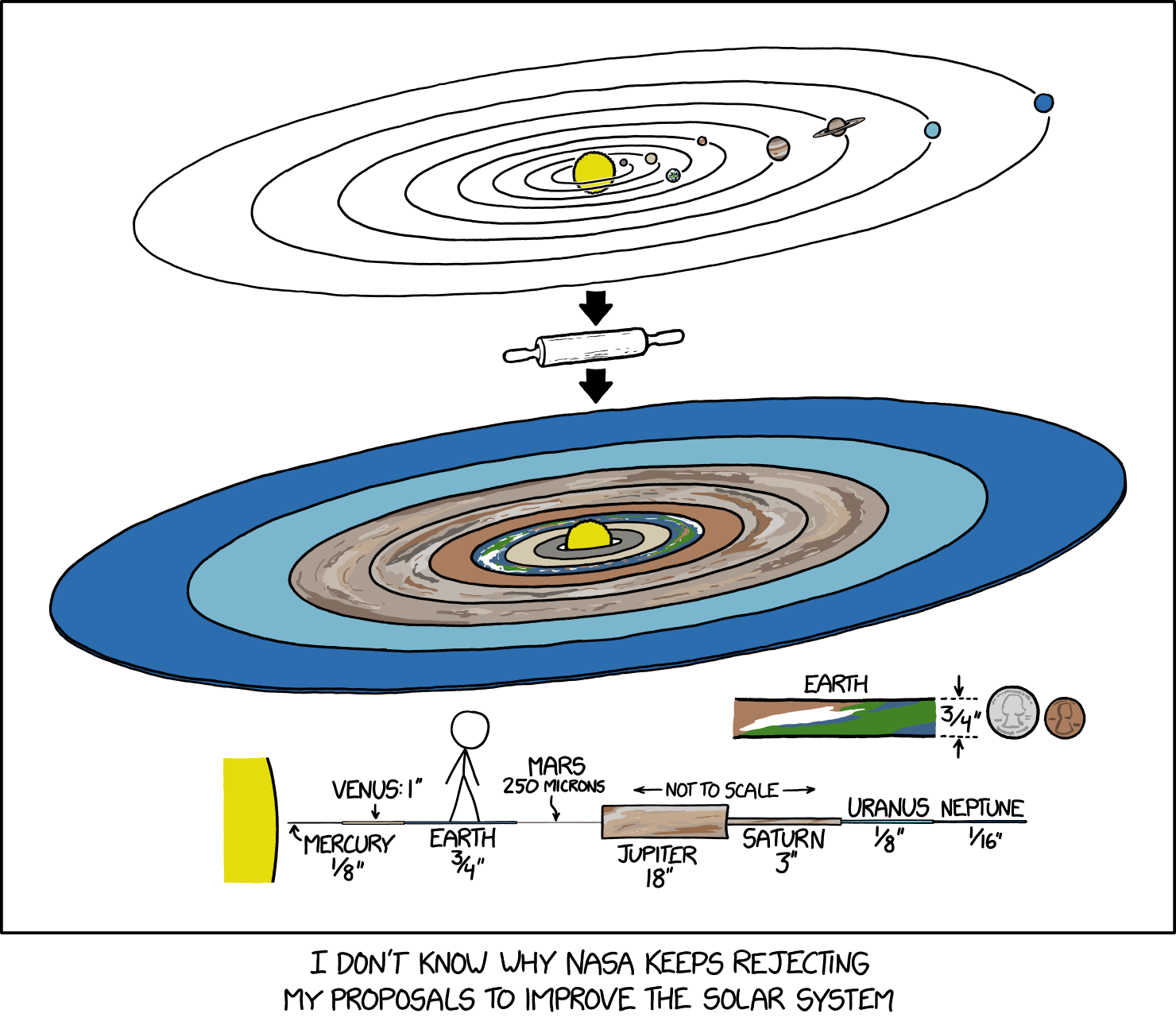March 15, 2023
#2750: Flatten the Planets explain

[This comic depicts a situation where the planets of the Solar System are flattened using a rolling pin to create a contiguous ring system around the Sun, with each planet taking up the part within their orbit to the next planet (or the Sun).]
[The top part shows a normal image of the Solar System with the eight planets orbiting the Sun, and their orbits shown as circles. The Sun is yellow and the planets have approximately the color they typically are shown in. Earth has more features than the other three rocky planets. Jupiter has clear features including the red spot, while Saturn has its rings. Beneath this is a broad arrow pointing down.]
↓
[The arrow points to a rolling pin. A similar arrow points down to the next image.]
↓
[The second large image shows the Solar System with the planets flattened to fill out the gap between the Sun and each of the planets, so they each cover the area of the circle within their orbits, into the next planet (or the Sun). Each segment has kept a similar color as used for the planets in the first image. The Sun is not flattened and is now the center of a huge ring with eight different colors, some with patterns, mainly Earth, but also Jupiter and Saturn’s discs show features.]
[Beneath this to the right is a side view of the flattened Earth, with its thickness indicated with two arrows pointing in at the top and up at the bottom of two dotted lines continuing where the “Earth” stops. A label has been written between these two lines, and the thickness is compared to US quarter and penny coins.]
Earth
3/4"
[Below this and going all the way across the panel is a side view with a segment of the Sun to the left followed by all the flattened planets, labeled with their name and their thicknesses. Arrows point to the relevant segment from the three rocky planets other than Earth. Above Jupiter and Saturn is a label between two arrows. Text alternates between being above and below the planets. Their thicknesses differ quite a lot, with Mars being the thinnest and Jupiter by far the thickest. Cueball stands on the flattened Earth.]
← Not to scale →
Mercury 1/8"
Venus: 1"
Earth 3/4"
Mars 250 microns
Jupiter 18"
Saturn 3"
Uranus 1/8"
Neptune 1/16"
[Caption below the panel:]
I don’t know why NASA keeps rejecting my proposals to improve the Solar System